The fascinating world of brown birds in Michigan is our destination today. Birdwatching in Michigan is great, and brown birds are an integral component of the state’s vibrant ecosystem. This post will introduce you to 15 fantastic species of brown birds that may be found in Michigan.
What Are The Types of Brown Birds That Live in Michigan?
1. Eastern Bluebird
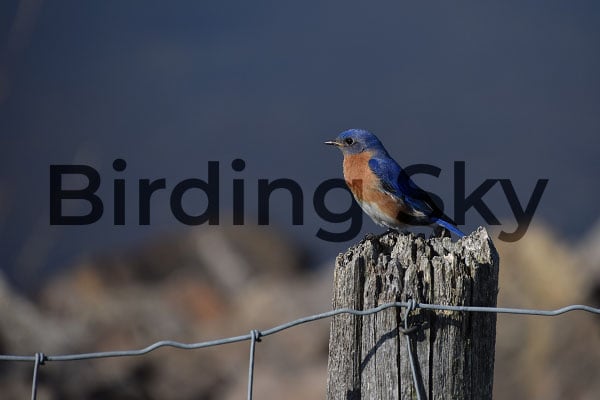
Looks and Colorful Feathers: Imagine a small bird with bright blue feathers on its back and a rusty-orange throat. It’s like a tiny blue gem with a dash of orange!
Where They Live: Eastern Bluebirds love places with lots of open space, like meadows and gardens. In Michigan, you can find them in the southern and western parts of the state.
What They Do: These birds are experts at catching insects and spiders. They also sing lovely songs and often sit on wires or fence posts.
2. Hermit Thrush
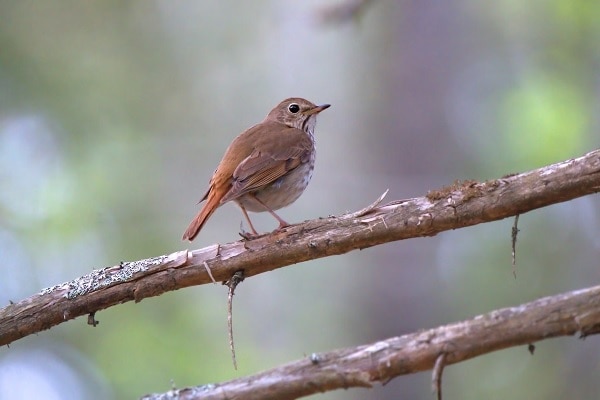
Looks and Feather Style: Hermit Thrushes have brownish-gray feathers with white tummies. They also have spots on their breasts and reddish tails.
Favorite Michigan Spots: You can spot these birds in Michigan’s coniferous and mixed forests, especially during the breeding season.
Unique Habits: Hermit Thrushes have a special, hauntingly beautiful song that sounds like a flute. It’s like a magical forest melody!
Must Visit: Small Birds with Long Beaks
Sparrows and Finches
3. Song Sparrow
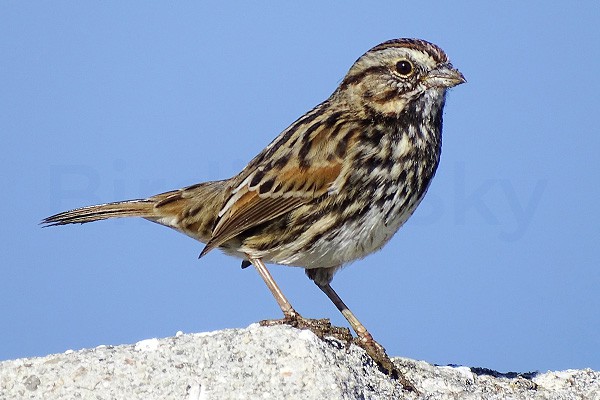
Looks and Patterns: Song Sparrows are brownish-gray with dark streaks on their backs and wings. They have a neat spot in the middle of their chests.
Hangouts in Michigan: These sparrows are all over Michigan, from marshes to gardens and even suburban areas.
Musical Friends: Song Sparrows are great singers, and each one has its own special song.
4. House Finch
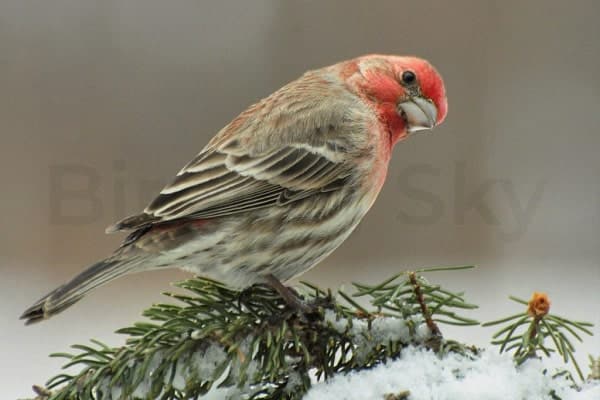
Looks and Red Heads: Male House Finches have bright red feathers on their heads and throats. Females are brown with streaks. These are one of the most famous brown birds in michigan.
City Living: House Finches are experts at living in cities and can even nest on buildings and in hanging planters.
Favorite Food: They love munching on seeds and are often seen at bird feeders.
Woodpeckers
5. Northern Flicker

Looks and Markings: Northern Flickers are brown birds with cool black spots on their backs. They have a little black bib on their chests.
Fun Behavior: These woodpeckers have a special way of flying called “flickering.” They also like to nest in tree holes and dig for ants and beetles.
Dining Style: Northern Flickers prefer to find their food on the ground, using their long beaks to grab insects from the dirt.
Related: Black and White Birds in Michigan
6. Downy Woodpecker
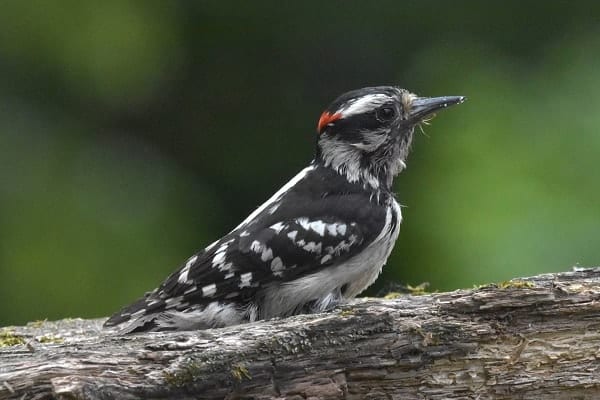
Looks and Spots: Downy Woodpeckers are small with black and white feathers. They have spots on their wings and a white belly.
Michigan Spots: You can find them all around Michigan, from woodlands to parks and even suburban places.
Favorite Foods: These woodpeckers love to eat insects and sip sap from trees.
Hawks and Falcons
7. American Kestrel
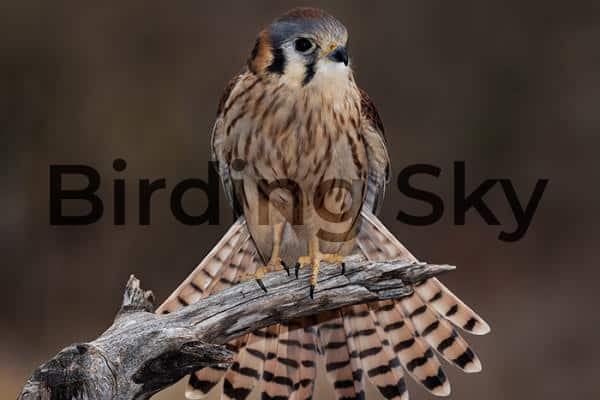
Looks and Colors: American Kestrels are small raptors with rusty back feathers and bold black markings. The males have blue-gray wings and unique faces.
Hunting Pros: These falcons are excellent hunters and like to catch insects, small mammals, and other birds. They’re known for hovering while hunting.
Saving Kestrels: Some folks in Michigan are working hard to protect the places where these birds make their nests.
8. Red-tailed Hawk
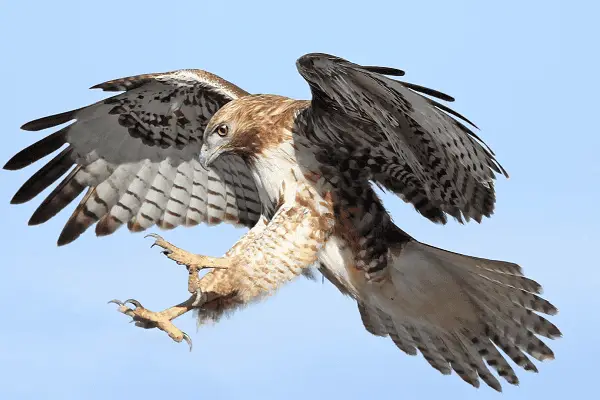
Looks and Bands: Red-tailed Hawks are big birds with reddish-brown tails and a stripe across their bellies. Their wings can stretch up to 56 inches wide!
Everywhere in Michigan: These hawks are all over Michigan, from forests to grasslands.
Helping Nature: Red-tailed Hawks are like the guardians of the ecosystem, helping keep things in balance by catching rodents.
Warblers
9. Palm Warbler
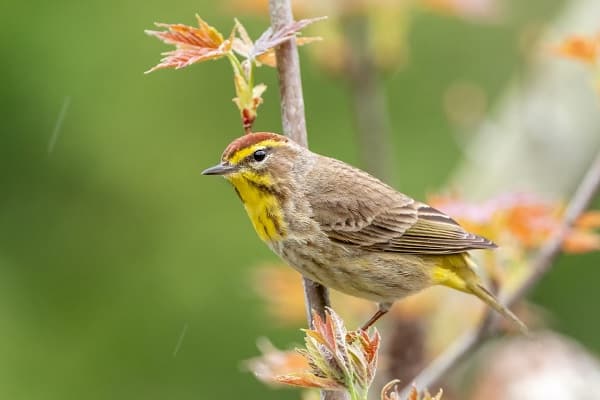
Looks and Tail Wagging: Palm Warblers have brownish-olive backs, rusty caps, and bright yellow tummies. They’re known for wagging their tails all the time.
Travelers: These birds travel long distances, breeding up north and spending winters in the southeastern United States and the Caribbean.
Dining Style: They love to hop on the ground, flicking their tails as they search for tasty insects.
10. Common Yellowthroat
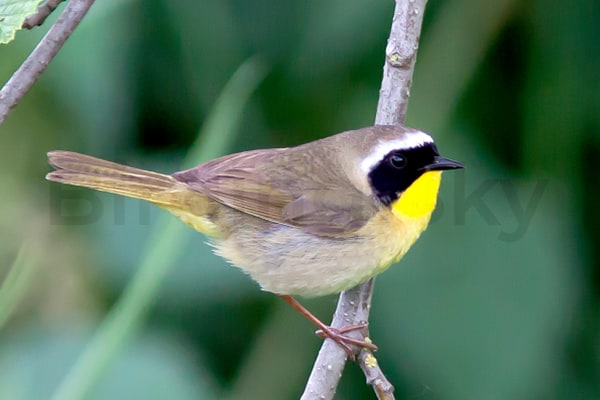
Looks and Masks: Common Yellowthroats are small birds with yellow throats and black masks on their faces.
Wetland Friends: These birds really like wetlands and make a “wichity-wichity” sound when they sing.
Home in Michigan: They build their nests in Michigan’s wetlands and have some pretty sneaky hiding spots.
Related Article: White Birds in Michigan
Orioles and Blackbirds
11. Baltimore Oriole
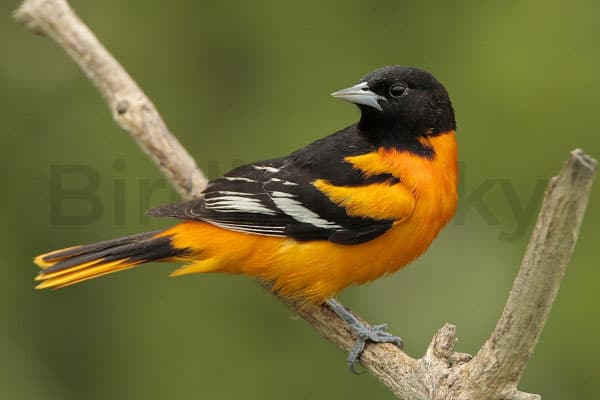
Looks and Fancy Colors: Baltimore Orioles are known for their bright orange feathers and black markings. The males especially look like they’re ready for a fancy party!
Nest Builders: They’re skilled at weaving nests using plant fibers. Orioles mostly eat fruit, nectar, and insects.
Special Guests: People in Michigan admire these birds for their beauty and grace.
12. Brown-headed Cowbird
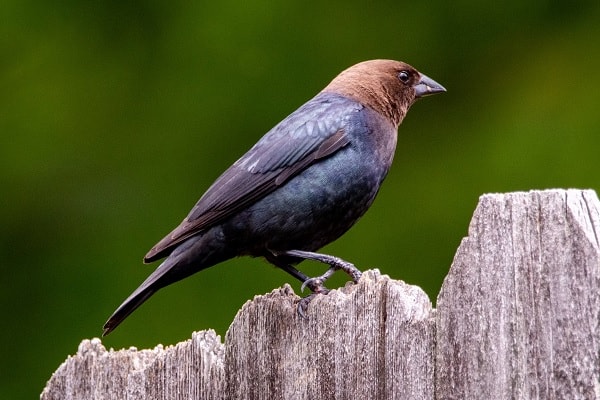
Looks and Dark Heads: Brown-headed Cowbirds are small brown birds with dark heads.
Tricky Nesting: These birds are famous for laying their eggs in other birds’ nests, fooling other bird parents into raising their chicks.
Helping Out: Some folks in Michigan are working to make sure this doesn’t cause problems for other birds.
Wrens
13. Carolina Wren
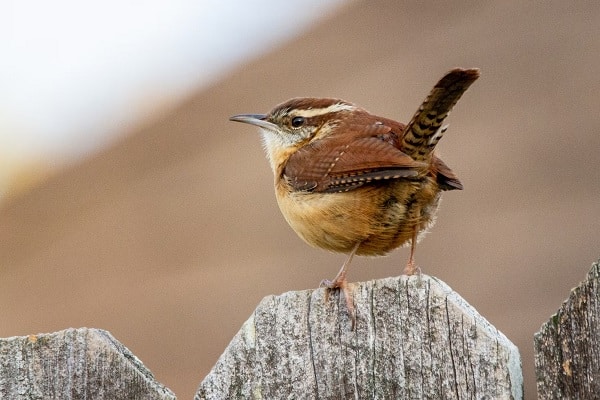
Looks and Sounds: Carolina Wrens are small with warm brown feathers and a cool white stripe over their eyes.
Habitat Experts: They can live in gardens and wooded areas and sing really loudly, like they’re having a musical party.
City Nests: These wrens often build their nests in nooks and crannies around buildings, so you might spot them in your neighborhood.
14. House Wren
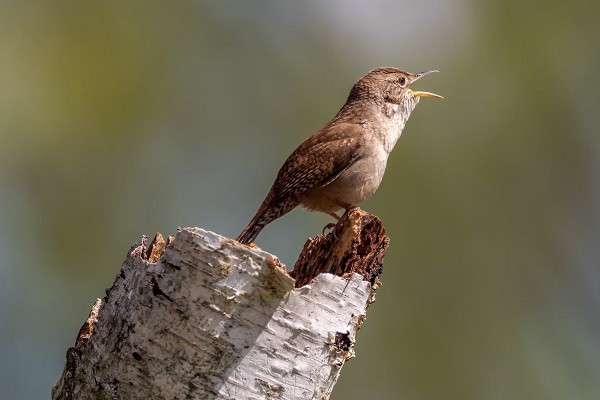
Looks and Size: House Wrens are small and plain brown with slightly curved beaks.
Nest Masters: They’re famous for their amazing nest-building skills and often use birdhouses or tree holes.
Friendly Neighbors: House Wrens are familiar birds in Michigan, and their songs are like a cheerful part of the summer soundtrack.
Mockingbirds and Thrashers
15. Northern Mockingbird
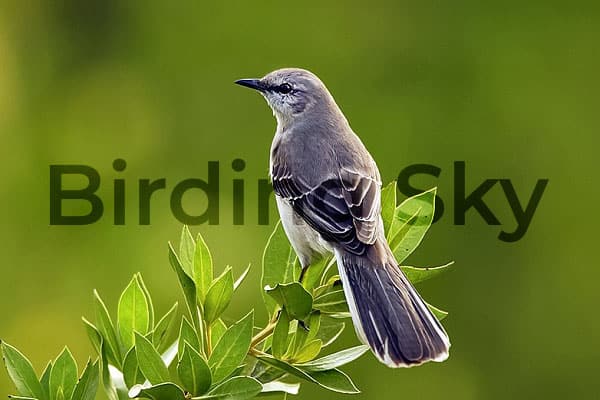
Looks and Mimicking Skills: Northern Mockingbirds are gray with white tummies and long tails. They can copy the songs of other birds and even sounds in their environment.
Moving North: These birds are expanding their territory northward, so you’ll see more of them in Michigan.
Singing Stars: Northern Mockingbirds have a big collection of songs they use to impress their friends and claim their territory.
16. Brown Thrasher
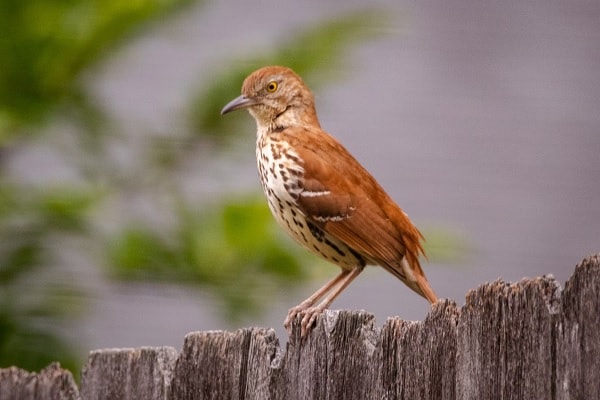
Looks and Bold Streaks: Brown Thrashers are brown with striking streaks on their breasts.
Home Life: They often live in shrubby areas and are really good at protecting their turf.
City Challenges: In cities, Brown Thrashers face problems because of habitat loss, which makes it important to protect their natural homes.
FAQs:
Q1: Why Are Brown Birds Important in Michigan?
Brown birds help with things like eating insects and spreading seeds, which keeps the environment healthy.
Q2: How Can I Attract Brown Birds to My Backyard in Michigan?
You can plant bird-friendly plants and put up bird feeders to make your yard inviting for them.
Q3: Are Any Brown Birds in Michigan in Danger?
Yes, some like the Kirtland’s Warbler need our help because their homes are disappearing.
Q4: Where Can I Watch These Birds in Michigan?
Go to places like state parks and nature reserves. You can also find great birding spots along Lake Michigan.
Q5: How Can I Tell Different Brown Birds Apart?
Look at their feathers, listen to their songs, and pay attention to their unique calls.
Q6: What Can I Do to Help Protect These Birds in Michigan?
Support groups that take care of birds, ask people to protect bird homes, and avoid bothering them.
Q7: Do Brown Birds Build Nests in Special Ways?
Yes, each kind of brown bird has its own way of making nests, from nests on the ground to tree homes.
Q8: Can I See Migratory Brown Birds in Michigan?
Absolutely! Michigan is a stopover spot for many brown birds during their long trips.
Q9: Are There Groups in Michigan That Help Brown Birds?
Yes, there are clubs and organizations dedicated to helping brown birds in Michigan.
Q10: What Do Brown Birds Mean in Michigan’s History?
Brown birds have been a source of inspiration for art and culture in Michigan, showing how important they are to the state’s story.
Wrapping Up…
So, there you have it, young bird enthusiasts! Brown birds are fascinating and vital members of Michigan’s bird family. From the beautiful Eastern Bluebird to the clever Baltimore Oriole and the mimicry master, the Northern Mockingbird, these brown birds make Michigan’s nature even more incredible. We hope you’ll explore and enjoy watching these amazing birds, whether in your own backyard or in Michigan’s many birdwatching spots.
